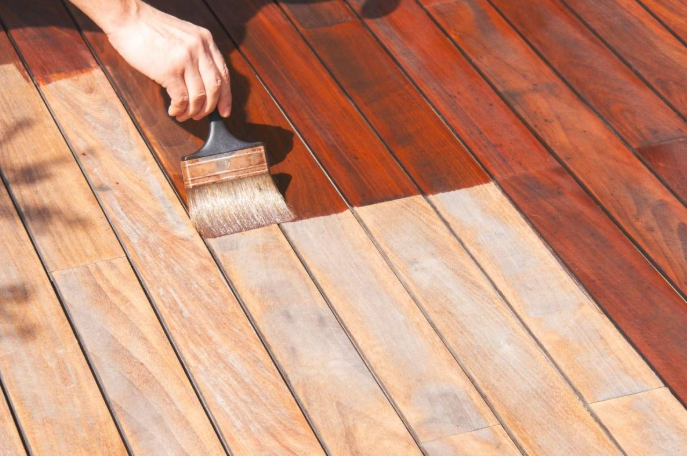A deck is one of ultimate beautiful and working additions to any home, providing an outdoor retreat for entertainment, family gatherings, and pleasing guests. However, claiming its advantage and longevity requires, in addition to just regular cleansing.
Importance of Deck Finishes and Stains
Before you pick a product, it’s important to understand reason deck finishing matters. You can also contact trusted deck contractors.
Your deck is constantly unprotected to the elements—sunlight, rain, snow, and temperature fluctuations—all of that can cause:
- Fading and discoloration from UV indications.
- Wood rot and warping due to liquid penetration.
- Cracking and splintering over opportunity.
Deck Finish Types
Clear or Transparent Finishes
Purpose:
Preserve the open look of wood.
Best for:
Newer decks from high-quality, clumsily made with appealing grain patterns (like tree or redwood).
Protection level:
Moderate. Offers water repellence but limited UV opposition.
Semi-Transparent Colors
Purpose:
Enhance wood grain while accumulating subtle color.
Best for:
Homeowners want a balance between aesthetics and protection.
Protection level:
Good. Provides both UV and moisture resistance.
Semi-obvious stains are the most standard choice for many decks, as they preserve the wood’s beauty while promoting its growth. They’re ideal for slightly earlier decks or those exposed to moderate weather.
Solid or Opaque Stains
Purpose:
Add rich, uniform color while covering the seed.
Best for:
Older decks with endured or mismatched boards.
Protection level:
Excellent. Offers strong UV protection and enduring coverage.
Solid stains function more like paint, providing a durable coat that can last 3–5 years. However, they obscure the everyday texture of the wood, so they’re better for decks that prioritize stamina over natural presentation.
Consider Your Deck Material
Different materials respond differently to stains and finishes. Understanding what your deck contains ensures optimum results.
Cedar and Redwood:
Naturally charming woods accompany rich color and texture. A clear or gently tinted stain improves the grain outside, hiding it.
Hardwoods (like Ipe, Mahogany):
Dense and durable, these woods may not absorb severe stains. Use a specialized harsh oil planned for hardwoods.
Choosing the Right Color and Aesthetic
Beyond guardianship, the stain color sets the tone for your rustic space.
Here are a few design considerations:
- Natural tones (tree, oak, or honey) – highlight the wood’s advantage and blend seamlessly with type.
- Rich browns or reds – found warmth and complement plant life or brick exteriors.
- Greys or secret tones – modern, sleek, and wonderful at hiding soil.
- Two-tone finishes – pair an upset floor with easier railings or trims for contrast and optical depth.
When unsure, test a narrow area first. Lighting conditions—sun uncovering and shade—can significantly change the appearance before the stain dries.
Preparing and Applying the Finish Properly
Even the best stain won’t act well without proper arrangement.
Steps to follow:
1. Clean thoroughly:
Remove dirt, waste, mildew, and traditional finish using a deck cleaner or brightener.
2. Sand effortlessly:
Smooth rough spots and open the wood surface for better absorption.
Conclusion
Choosing the right finish or stain for your deck is both a useful and beautiful conclusion. It’s about verdict the perfect balance between security, appearance, and support.
By seeing your deck’s material, local weather, color weaknesses, and asked endurance, you can select a finish that improves both the beauty and age of your outside area. A correctly stained deck not only stands up to the elements—it improves a stunning climax of your home’s outdoor living space for seasons at hand.


